THE SHAMAN SAYS,
Fill the bowl
with Mountain Smoke
and pack it.
Light and inhale.
Smoke it up.
Fill the bowl again
and get real sick.
Vomit all of your impurities.
Jim Bodeen
27 April 2010
Rest Stop, I-84 North
DRIVING FOR THE CIRCLE
Fill the bowl
with Mountain Smoke
and pack it.
Light and inhale.
Smoke it up.
Fill the bowl again
and get real sick.
Vomit all of your impurities.
Jim Bodeen
27 April 2010
Rest Stop, I-84 North
DRIVING FOR THE CIRCLE
Karen finds the ceremonial pipe
the day I’m on the Bright Angel Trail
Made by Larry Cly, Navajo artist,
who hangs a bow over the entrance
to his home so enemies cannot enter,
we’ve been looking for this pipe
to hang on the gun rack
to protect the mothership.
Horsehair is for strength,
Antler so one can be swift and agile
like the deer. Beads for prosperity,
and fur for intelligence.
Feathers take our prayers to the gods.
As a boy in North Dakota
Indian Tobacco in the bowl
of my small pipe and smoked it
behind the barn in a tepee
made of sticks. We ask in gallery
and trading post what smoke
will honor this pipe, purifying us
for the journey home. “Mountain smoke,”
the man says who shows me Nakai’s
flute and Talisman for the music,
“Clay pipes is what our people use,”
he says. A young Navajo father
at a roadside stand sells me an eagle head
carved from buffalo bone and directs me
to PowWow Trading Post on the upper
side of Page, just off the reservation.
Original Mountain Smoke blend,
Dzal na toh, for goodway blessings,
made by Franklin Yazzie. We learn
of the elders’ fight to keep young people
from American cigarettes and cancers.
For the generation behind us, then,
I buy three clay pipes and three bags
of Mountain Smoke for three men
who I love, each one son and brother.
At the end of our day, Karen and I
shower and clean the table of all
but pipes and Mountain Smoke.
We have not been given
complete instructions. We made
it this far by learning to love each other.
Karen strikes the wood match
placing it over the bowl in my hands.
We smoke the ceremonial pipe
and the clay pipe for common days.
Other lessons have been given to us
for the men of the next to come.
Medicine in Mountain Smoke
is theirs to find. My job is to drive.
Jim Bodeen
27 April 2010
Walking the trail out of Indian Garden
into the blossoming desert towards the edge
of the plateau where cliffs fall
into the brown water of the Colorado River,
images of two daughters surface
in my altered walking state. One
of the daughters is mine, one is the daughter
of an aging witness watching
my country during a dangerous time.
That time is now. My daughter
gives her beautiful blood from the marrow
of her bones in multiple transfusions
to people she will never know.
The other daughter washes her clothes
on rocks in solidarity with women
in Nicaragua and El Salvador.
I had hoped to help make the lives
of children easier. Before the witness
of the daughters, now fully grown,
I can only petition God
for what Dr. King called for in reversing
the Parable of the Good Samaritan,
unsustainable obedience. Let me listen
that deeply, towards what I’m unable
to hear on my own, following
in obedience with no agenda.
Jim Bodeen
25 April 2010
Mather Campground
The South Rim
WALKING THE RIM WITH KAREN ON SUNDAY
Salt is one of the shape shifters
in the American southwest. I carry
the salt fragment with me into Sunday morning.
At the far end of the Rim Trail
Mary Colter built a memorial
for hermits that folds into the landscape.
A high school teacher in Minneapolis
answering the call of design. We buy
her book and I drink a Diet Coke
as Karen fills a shopping bag
with gifts for grandchildren.
Hats, t-shirts, stuffed squirrels,
and chocolate rocks. I pick out the book,
Who Pooped in the Park, illustrated.
The Rim Trail, accessible and unprotected,
allows the vulnerable and the elderly
to get as close to the edge as fools
who seldom survive their falls.
More people here carry digital cameras
than water and it’s all good,
the sun’s out, and it’s Sunday.
A builder of interiors, Colter’s
touch includes soot on fireplace stones.
Karen and I take one ceremonial meal
in El Tovar, looking at Hopi House,
another part of Colter’s vision
at the other end of the trail. A mud floor
made of cement, carved bultos,
and Hopi builders to do the building,
modeled after houses in Oraiba.
Colter’s architecture emerges
from here, this place, these people,
where everyone walks the rim on Sunday,
carrying what they came here with,
cancers, children, bills—
old marriages and new ones,
losses and new beginnings.
The old hotel proclaims,
“Dreams of mountains as if in sleep,
they brood on things eternal.”
We all come carrying. Colter
tucks herself away, unseen,
part of the salt we can’t see.
It really gets good
when a woman carrying the same book
Karen has in her pack
reads to her husband about the school teacher
Mary Colter from Minneapolis.
Jim Bodeen
April 25, 2010
 THE BRIGHT ANGEL TRAIL
THE BRIGHT ANGEL TRAILLe Guin's poem says,
"Let the arch of your feet be the mountains."
Her poem is some of what I carry.
Let me see even parts of this trail.

“This ‘fossil’ rubble marks the gates to the dark, foreboding inner gorges of the canyon, which contain some of the oldest rocks on earth: the Vishnu Schist. It is as if the depths of the earth were open to our gaze. It is like a journey to the earth’s interior. It is as if one were regressing in time into the geologic dark ages, before life or oceans or atmospheres as we know them, as we enter the black depths of ‘Granite Gorge.’”
“The Colorado Plateau, A Geologic History” Donald L. Baars
A photograph of John Wesley Powell alongside Paiute Indian, Tau-gu, in southern Utah, introduces the reader to Part III of Barr’s book, “Enter Man.” Tau-gu is on the right, Powell on the left, both looking off the page to the right. They stand in front of large rocks and we can’t see what they’re looking at. Powell is pointing to something with his left hand. His missing right arm behind Tau-gu. Powell is wearing heavy black wool pants with suspenders. Baar’s caption says Powell is providing information to Tau-gu. Tau-gu is interested in what he sees. What is clear to me about this photograph, is that whatever the two of them are sharing, it is a true thing. What they share is what most of the world is looking for.
Wallace Stegner writes of Powell’s journey, introducing Powell’s, “The Exploration of the Colorado River and Its Canyons” like this: “The last great exploration within the continental United States…not a government expedition…the meager funds came out of his own pocket…And the purpose of this shoestring expedition? Only to discover. To find out...the disinterested search.”
99 days. A 300 mile canyon turns out to be a chain of canyons more than a thousand miles long. Thin tradition in a thin landscape. Nine men. One learns about Powell reading any geology book. There were stories “from hunters and miners of men and boats entering the gorge in boats and being carried down with fearful velocity into whirlpools of underground passages for the great river into which boats had passed never to be seen again.” And this sentence: “There were other accounts of great falls whose roaring music could be heard on the distant mountain summits; and there were stories current of parties wandering on the brink of the canyon and vainly endeavoring to reach the waters below, and perishing with thirst at last, in sight of the river which was roaring its mockery into their dying ears.”
The disinterested search listens to everything and learns to listen. Pure discovery contains a channel for discrimination and discernment alongside a purer tradition of gathering raw data without judgment. Raw data and story telling. Leaving behind the war that took your ----- arm. Immersion into landscape and story. Not belonging to one’s past. The rock cut loose from the earth’s bedrock is dead. The present is the key to the past, but what past? Immersed in now for survival one is given the big story. Leaving the village behind.
Powell walks with the Indians into their mysteries of the canyon. “Long ago there was a great and wise chief who mourned the death of his wife and would not be comforted, until Tavwoats, one of the Indian gods, came to him and told him his wife was in a happier land, and offered to take him there that he might see for himself, if upon his return, he would cease to mourn. The great chief promised. Then Tavwoats made a trail through the mountains that intervene…and this, the desert home of the poor Numa. This trail was the canyon gorge of the Colorado…and when they had returned the deity exacted from the chief a promise that he would tell no one of the trail.”
Elevation, erosion and time greet one at the Bright Angel trailhead. Exposure to air and water changes the minerals. Both prehistoric and historic American Indians used the trail and raised crops along Garden Creek. There are pictographs above the trail at Indian Gardens. It is a 12-plus mile day hike to Plateau Point and back, accessible in spring with the last mile and a half crossing a blooming desert of cactus and banana yucca. It snowed on these tiny flowers yesterday. Sunny today, and warm, and one sheds the layers of clothes by mid morning. Annual rainfall on this plateau is four inches.
My hike into the Canyon is to Plateau Point. My photographs concentrate on knee-crunching and back-stretching switchbacks stunning in first morning light, and desert flowers on my knees crossing the plateau. Arriving at Plateau Point, after this beckoning descent, I remain on a mountain top. The Colorado River is directly below me. The Bright Angel Trail Guide tells me that I’m standing on Tapeats Sandstone on a broken sequence. “On the north side of the canyon, however, you will notice that there are several geologic formations between the Vishnu Schist in the Inner Gorge and the Tapeats. These layers are known as the Grand Canyon Supergroup and were deposited between 740 million and 1.25 billion years ago by seas, swamps, and rivers.” After lunch,
a peanut butter and jelly sandwich, an orange, a pork chop from last night’s dinner, and a Starbuck’s Coffee Mocha, I carry out my last official task of this journey. I say Hello to the Vishnu Schist for the poet Jody Aliesan.
The Tapeats lies directly on top of the Vishnu Schist. The contact between the two is called the Great Unconformity. “After the deposition of the Grand Canyon Supergroup, faults occurred, pushing the rock up and tilting it. In most places in Grand Canyon, erosion was so extensive that these rocks, over time, disappeared, leaving a 1.25 billion-year gap in time. This gap is called the Great Unconformity.”
“I Am the Grand Canyon: The Story of the Havasupai People”, a testimonial by Stephen Hirst, with its extensive collection of historical photos, and encomium by Fydel Jones on the back cover: “This book is our Bible. We use it to teach our kids who they are,” and the stunning cover photo of “Fire Off, Fire Away,” Waluthma, also known as Waluthma Charley, is the book I carry in the Mothership to read at night.
The photo of Supai Mary, from the 1940s calls to me because she grew up in the Garden Creek area where much of my hike passes through. It feels accurate to say: She is the Grand Canyon. It does not feel like as exaggeration to call her face the landscape of the Grand Canyon. The caption reads in part: “Yuul Gsayo as Havasupais knew her, grew up at Indian Garden and lived much of her life at the South Rim. In old age and completely blind, she rode on horseback sixty miles across the Coconimo Plateau and known a treacherous cliff trail from Grand Canyon Village to Supai.” On the opposite page, “Baa Glaqa, ‘Collapsing’ Black Tank, called ‘Bob’ by outsiders, Baa Glaqa (1870-1918) was a Havasupai gthye (shaman). After his death, his wife Lucy became one of the few Havasupai women ever to assume this role.”
Havasupai Tribal Chairman Lee Marshall is quoted by Hirst: “Our people were picking piñon in the twenties at Grand Canyon. The rangers wanted them out and told them, ‘We want to save it for birds and squirrels.’” Stephen Hirst’s book seems like an appropriate trailhead.
Ancestral Puebloan groups inhabit the area along Garden Creek from around AD 1100, building granaries and dwellings in the Tapeats cliffs. Garden Creek provided a permanent source of water for drinking and irrigation.
While this day is our solo day, Karen on her exploration, me on mine, I’m still walking with Karen, and I know she’s taking care of the dog, when I leave the mothership before sunrise. She’s still with me on the trail. And so is Noam Chomsky, 81, partly because of a painting of him that crossed my dreamfield last night. My sister walks this trail too. Vonnie was the chief companion and caretaker of our mother over most of our adult lives, before mom came to Yakima to be with my brother Chuck, myself and our families three years ago. Vonnie searches her knowledge of movies and Fedex’s us Grand Canyon, a story of urban chaos with a single thread of the Canyon’s archetypal powers. Vonnie accompanies the movie with a single last minute thread, “Transcend.”
Jim Bodeen
25 April 2010
Mothership
Mather Campground
WALKING TO THE BALANCED ROCK
How does it stay up? the man from Michigan
asks himself approaching in wonder.
I don't know know how it stays up.
She keeps it up, I say to Karen
getting into the mothership,
and She lets it down,
isn't that right, Karen.
That's right, Karen says,
She keeps it up, and She lets it down.
Jim Bodeen
23 April 2010
South Rim Grand Canyon






















































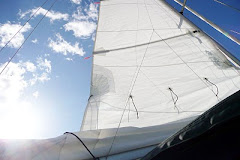

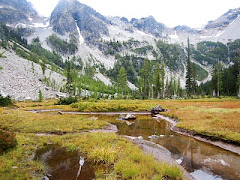


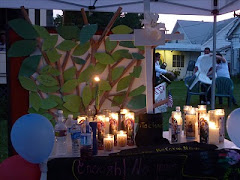






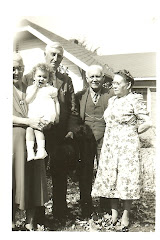
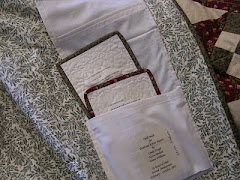









you've got a book here. Love the images and the words.
ReplyDeleteHere I am again. Barry Grimes told me today that you, Jim, liked to make scrapbooks as a boy. Scrapbooks of your life - of what was important to you. This blog, and even Facebook, are today's scrapbooks - places to post what's important to you. Thank you for allowing me a glimpse in to your life . . . and soul. Karen, too - you are both my heroes. I am president of your fan club.
ReplyDelete